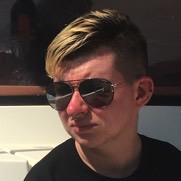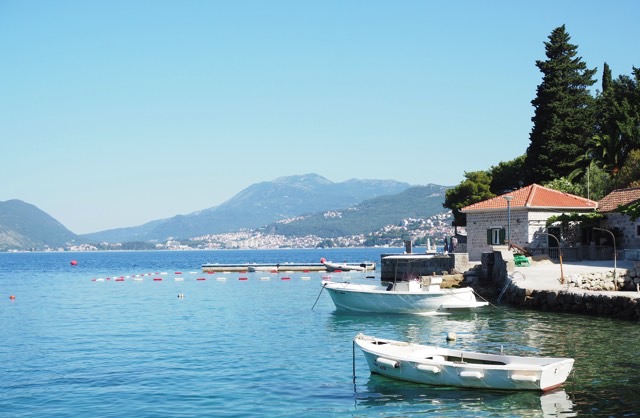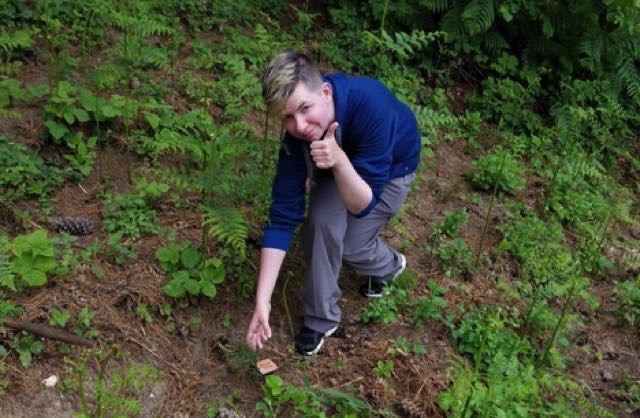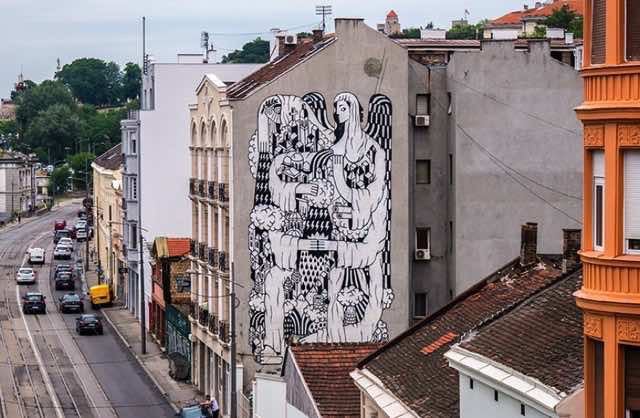Alexander on a Travel Writing Assignment in the Balkans
Alexander takes us to Macedonia and Serbia on his Balkan adventure as a winner of our 2017 Travel Writing Scholarship

Winner Writing Scholarship 2017
From scuba diving to kayaking, Alexander takes every opportunity to experience all the activities the Balkans has to offer. His mentor Tim Neville helps him get it all down for a great story.
Montenegro
My first impression of Montenegro was by way of a rickety jeep filled with the thick smell of petrol, and a path so narrow that one had to shift partially off-road to allow his oncoming neighbor to pass. It seemed that only rocks and shrubbery separated us from a plunge into the bay, Porte Rose’s crystalline waters and rustic buildings growing smaller and smaller beneath us as the road took us around and upward to the resort that awaited us at the top of the mountain.
An old settlement, carried through the family name for centuries and torn apart in the unfortunate casualties of war, Klinci village’s owner, Bogdan Kaluđerović, painstakingly restored its structure brick by brick, converting it into a peaceful retreat overlooking the forest below. I was greeted with plates of olives, goat cheese and the best prosciutto I’d ever had in my life; along with a bittersweet glass of rakija that warmed the path of my throat. Our writing workshop with Tim Neville was set in one of the apartments of this storybook-like abode, and our excursions took us across waters so clear that we could see the rocks and urchins along the bottom.
At night, we set off to the middle of the sea for a fishing adventure; light-hearted conversation, squid soaked in ink, and grapa, another type of brandy like rakija, brought us together with our Serbian and Montenegrin comrades.

Macedonia
I spent five days in Macedonia on a richly-packed tour via Balojani Tourist Services. With a vast history encompassing many centuries, Macedonia was a beautiful array of biodiversity, charming villages, and towns that embodied the juxtaposition of ancient and modern civilization. Its capital Skopje presented a city full of traditional pride, ravaged and rebuilt under an oppressive regime only to be restructured by the people when control was wrested back once again. With bazaars and Turkish baths still preserved today, it remains a melting pot of multicultural aesthetics.
A scenic drive through the beautiful green countryside brought me to Ohrid, an old lakeside town with a complicated history. It held a myriad of historical ruins, including the fortifications that once protected the city, and even the remains of an ancient Roman theatre. The central town square and docks were modern arrays of shops, souvenir stands and restaurants, while the Old Town blended preserved architecture and tradition with modern artisans and merchants.
My travels then carried me through the National Parks of Galičica and Pelister, interspersed with visits to the local villages. A simple fisherman’s boat took me out to the Golem Grad Island: a small island within Galičica’s borders that used to be the pleasure area of Emperor Samuel, ruins of old houses and basilicas scattered among the forest where cormorants, turtles and other creatures have since made their home. A beginner’s scuba diving class took me beneath the water for the very first time in Lake Prespa, followed by an exploration of Pelister National Park to watch for bears, view the endemic Molika pine trees, and even plant my own sapling. The tour wrapped up with a trip to the charming town of Bitola.

Serbia
Belgrade was a contrast to the time I spent in Montenegro and Macedonia, with walls and buildings covered in graffiti art and streets that wove interesting patterns around one another. Left to my own devices, I selected two excursions with Victor Tours. A tour of the Pannonian Region brought me to one of the Fruška Gora Monasteries, followed by the Petrovaldin Fortress and the charming 18th-19th century aesthetics of Novi Sad—Serbia’s second-largest city and an important cultural hub. The trip ended with a wine tasting and a stroll through the classy Baroque town of Sremski Karlovci: an important educational center and the place where the Treaty of Karlowitz was signed in 1699, ending the Austro-Ottoman war.
The other excursion covered several important sites in and around Belgrade. A brief drive out of town took me up the little mountain of Avala to view its wartime monuments, followed by a visit to the Church of Saint Sava: one of the largest Orthodox churches in the world. A walk through Kalemegdan Park introduced me to ruins as old as the 15th century, and the municipality of Zemun was a quaint neighborhood of cobbled streets and pastel-colored houses.
Finally, I capped off my visit to Serbia with a kayak tour via Belgrade Adventure, a challenging but exciting route at the confluence of the Danube and Sava rivers. Swans, ducks, and other birds roosted at the mossy banks as I rowed upstream around the Great War Island. With sunburnt legs and a notepad filled with hasty scrawling, I then made my way back to Dubrovnik, and onward home.

.jpg)